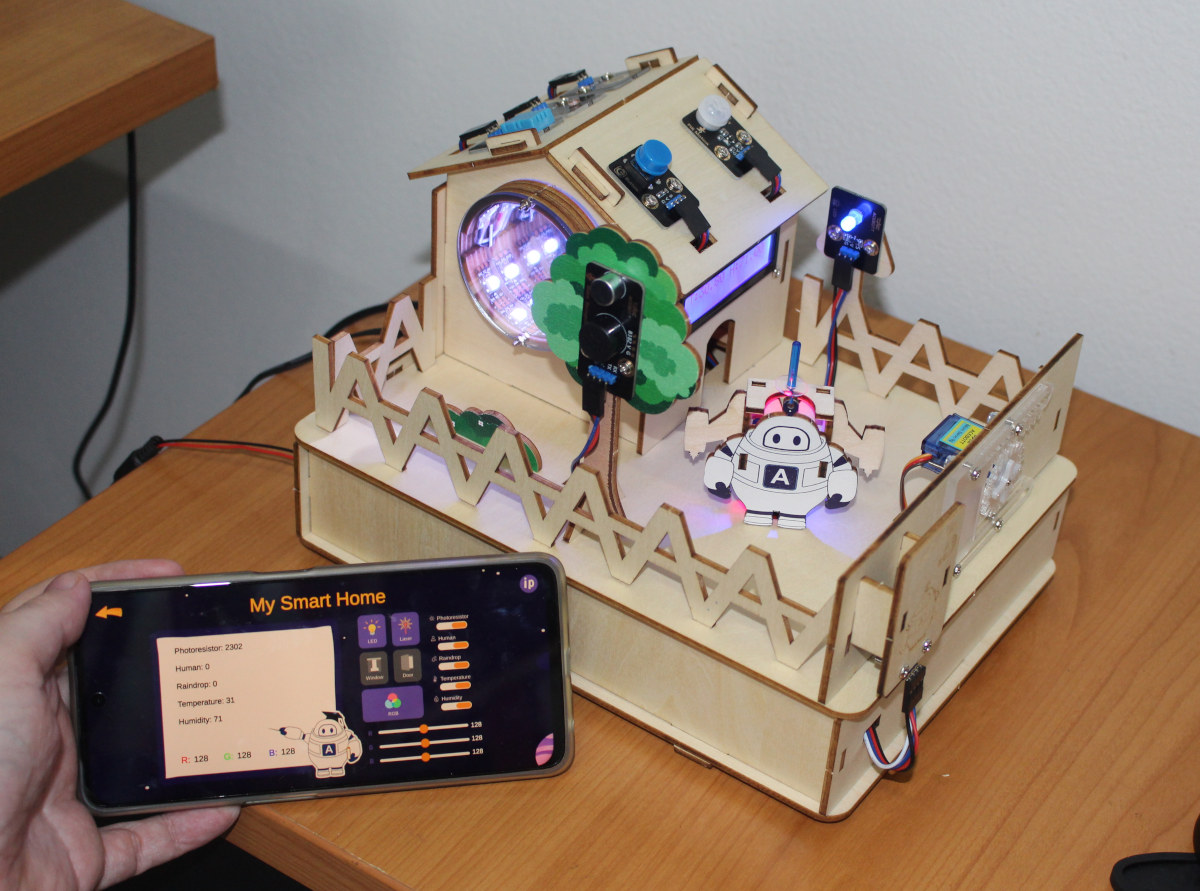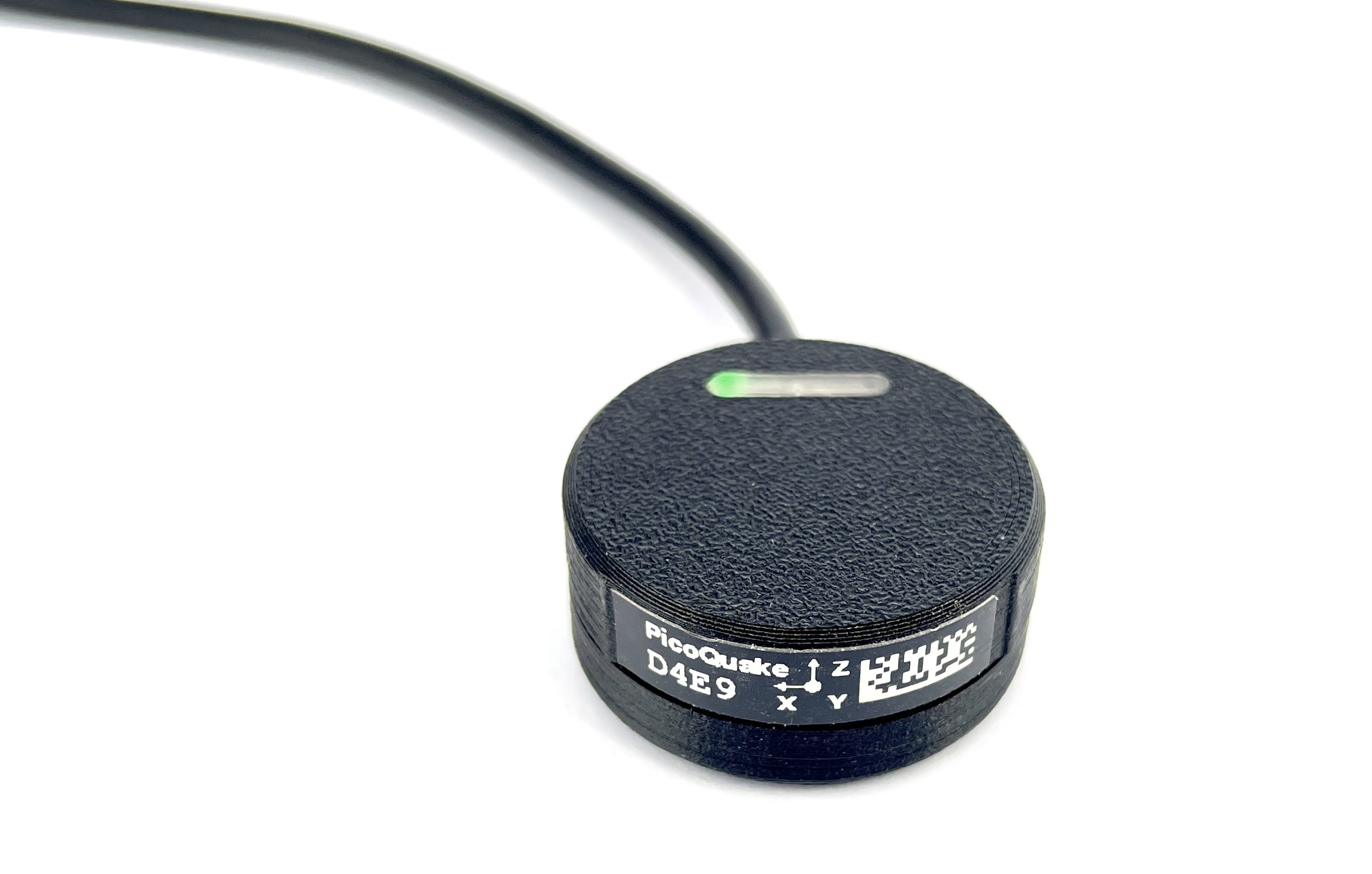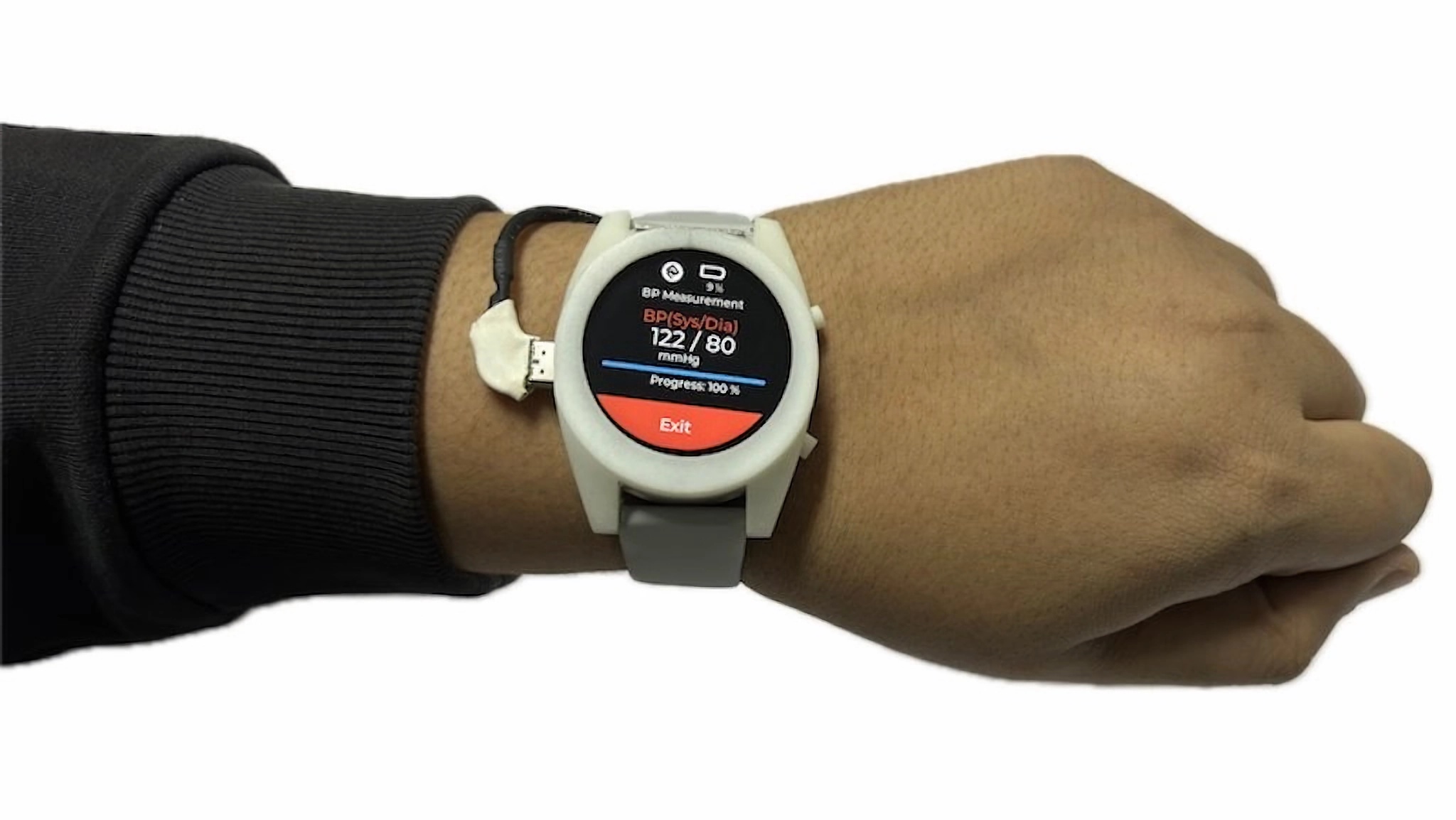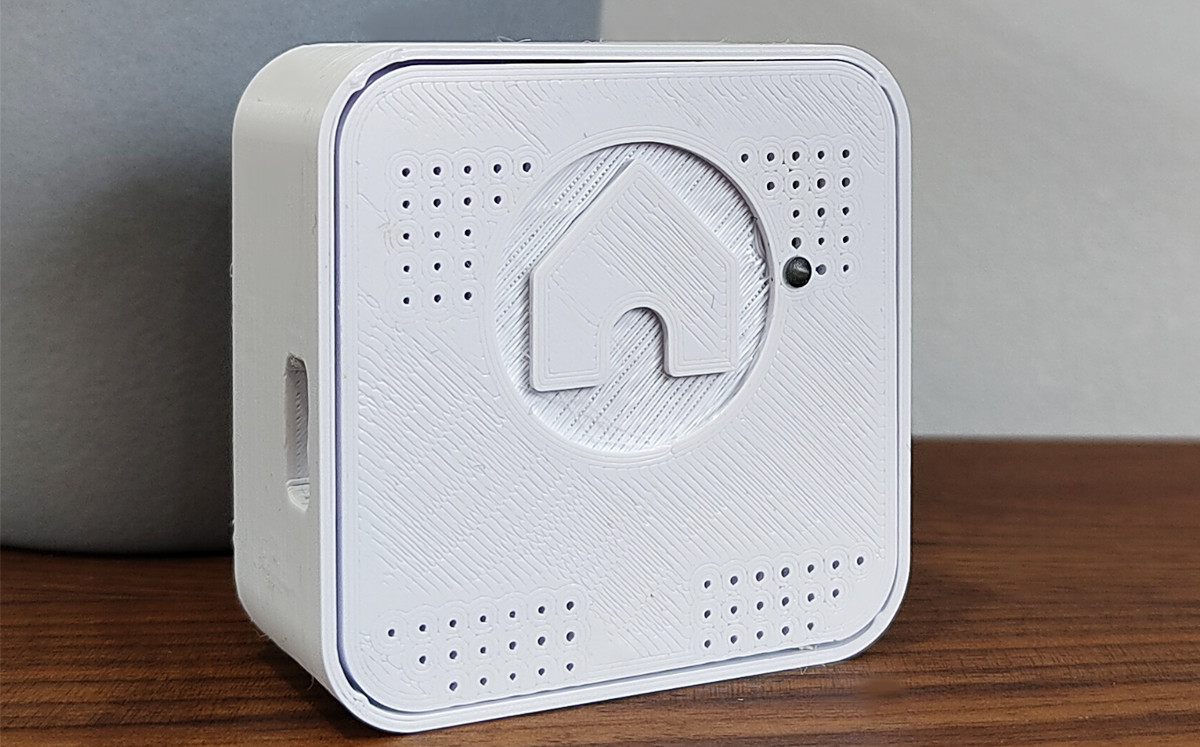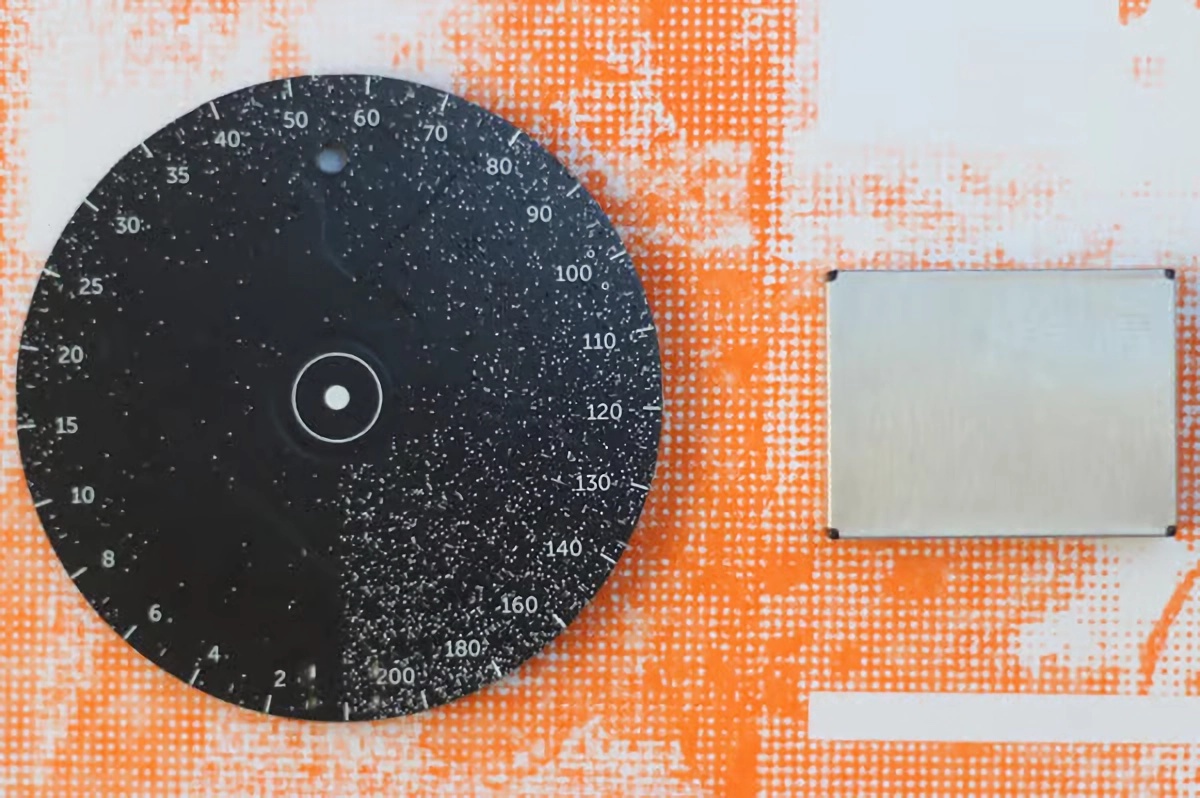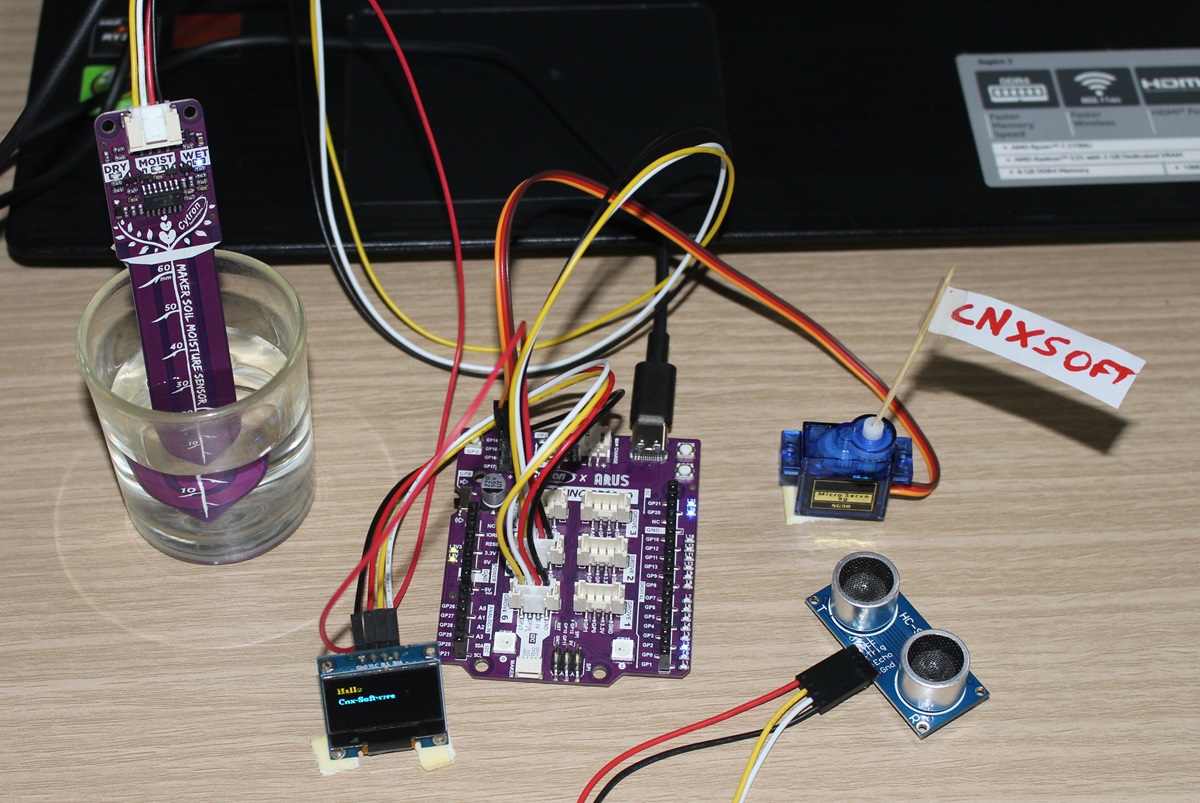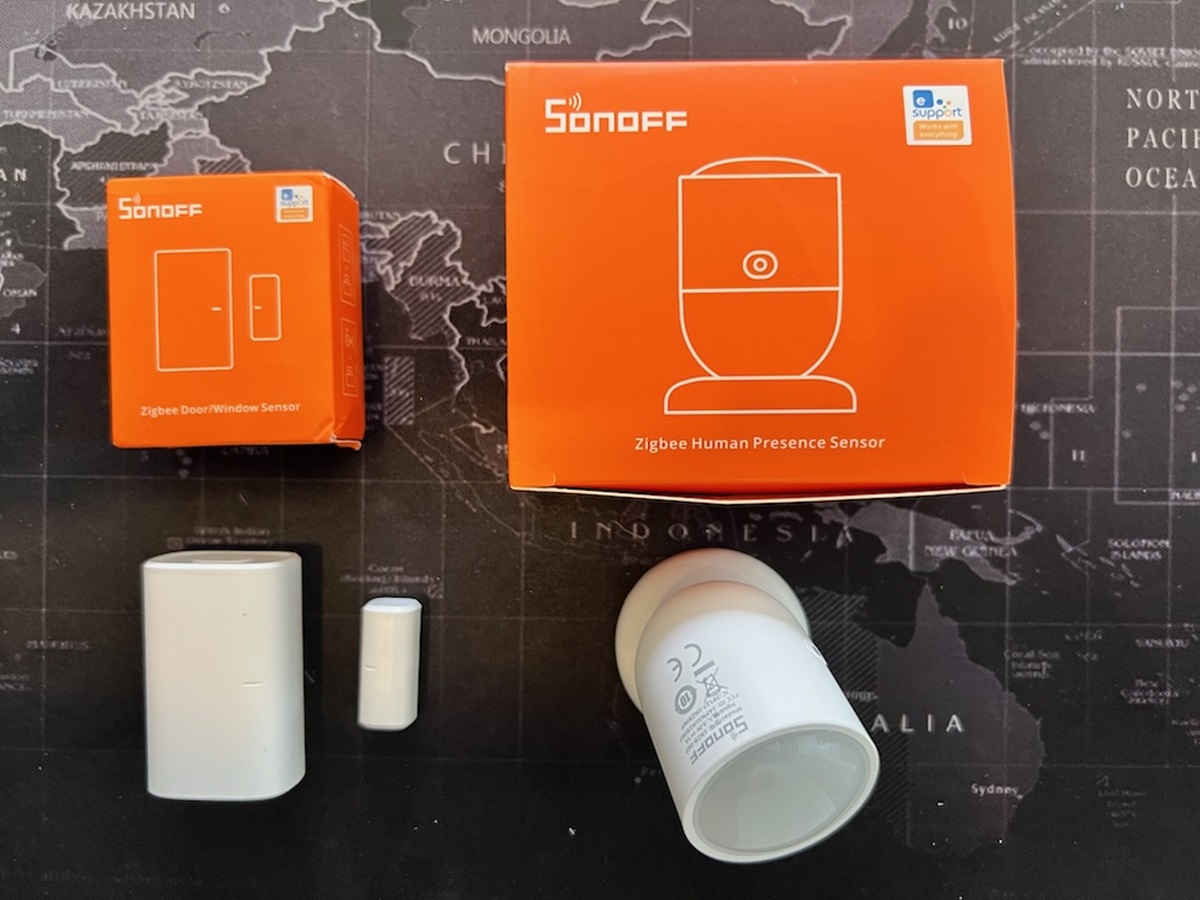ACEBOTT QE007 ESP32-based Smart Home Starter Kit is a STEAM (Science, Technology, Engineering, Arts, and Maths) education platform that involves story reading, assembling a wooden house with various electronics sensors wired to an ESP32 board, and learning about electronics concepts (such as voltage and current) and coding with the Arduino IDE through an 18 lesson course. ACEBOTT has various STEAM education kits, and the company sent us the QE007 “IoT Smart Home Starter Kit” for evaluation and review. So I’ll go through an unboxing, report my experience with the assembly process, and the Arduino tutorials by going through some of the eighteen lessons. ACEBOTT QE007 unboxing The kit comes in a nice-looking retail that reads “ACEBOTT Explorer Series QE007” and “ACEBOTT IOT Smart Home Started Kit”. The front of the package also highlights its a STEAM education kit designed for 8+ years old kids. The bottom side gives the backstory […]
PicoQuake USB vibration sensor is based on the RP2040 MCU and the ICM-42688-P vibration sensor
The PicoQuake is a USB vibration sensor with a MEMS accelerometer covering a wide range of vibrations. It is capable of capturing vibrations in the low-frequency range (tall buildings, bridges) to the high-frequency range (motors, industrial machinery). It can operate as a standalone device and connect to a computer via a USB cable. Furthermore, it is based on the Raspberry Pi RP2040 microcontroller and uses a low-noise MEMS inertial measurement unit, the TDK InvenSense ICM-42688-P, which combines a 3-axis gyroscope and a 3-axis accelerometer. The low-noise IMU sensor used enables the PicoQuake to profile vibrations of very low magnitude. The PicoQuake sensor is a product from Slovenian maker, PLab, just like the FOCn driver module we took a look at recently. Potential use cases for the PicoQuake include optimizing brushless DC motor vibrations (important in small mobility products such as electric bikes and scooters), tracking trackpad clicks, smart home automation, […]
7-inch ESP32-S3 touchscreen display exposes RS485, CAN Bus, I2C, UART, and analog sensor interfaces
Waveshare ESP32-S3-Touch-LCD-7 is an ESP32-S3 powered WiFi 4 and Bluetooth 5 LE 7-inch touchscreen display with plenty of expansion interfaces such as RS485, CAN Bus, I2C, UART, and Analog input that can be used to develop various HMI applications We’ve written about many ESP32 boards with displays, but most are small displays under 3-inch, and larger displays are more of a rarity except for ESP32 e-Paper displays such as the Inkplate 10 or LILYGO 7.5-inch e-Paper display. Most are based on ESP32-S3 since it comes with an RGB LCD interface, and the only other 7-inch ESP32-S3 touchscreen display we’ve looked into is the Elecrow 7.0-inch display with specifications similar to the Waveshare ESP32-S3-Touch-LCD-7, but fewer I/O headers. Waveshare ESP32-S3-Touch-LCD-7: Wireless module – ESP32-S3-WROOM-1 MCU – ESP32-S3N8R8 dual-core Tensilica LX7 up to 240 MHz with 512KB SRAM, 8MB PSRAM, 8MB flash Wireless – 2.4 GHz WiFi 4 and Bluetooth LE 5 […]
HealthyPi Move is an open-source nRF5340-powered biometric monitor worn like a watch (Crowdfunding)
The HealthyPi Move is the latest biometric monitor in the HealthyPi series from ProtoCentral. It is the first to come in a wearable form factor and can measure up to eight vital signs. It is powered by a Nordic Semiconductor nRF5340 dual-core SoC, with a Cortex-M33 application processor and a Cortex-M33 network processor. It features 128MB of flash memory connected through a high-speed QSPI interface that can store up to 10 days of processed data. It is capable of measuring galvanic skin response (EDA/GSR), electrocardiogram (ECG) signals, and photoplethysmogram (PPG) signals for determining blood oxygen level (SPO2), blood pressure, and heart rate variability. It also includes a body temperature sensor and inertial measurement unit (IMU) with a 6-axis accelerometer and gyroscope. HealthyPi Move targets medical and biotech applications, including personal health tracking, building healthcare devices, and even clinical research with approval from the FDA or IRB. We have previously covered […]
Airlytix ES1 environment monitor runs ESPHome for Home Assistant integration
Airlytix ES1 environment monitor is an ESP32-based environment tracking device that runs ESPHome. The device tracks various environmental parameters like temperature, humidity, air quality (PM1.0, PM2.5, PM4, PM10, VOCs, NOx, CO2), barometric pressure, ambient light, and noise levels. To make things even more interesting, the device ships with a compact 3D printed case and can be integrated with Home Assistant for smart home automation. Previously we have written about similar environment monitor devices like the Sonoff SC WiFi, V-Air Monitro, and devices like Arduino MKR IoT Carrier Rev2, Radair mini gateway, and Nicla Sense ME designed for environment monitor applications. Airlytix ES1 environment monitor specifications MCU – Unnamed ESP32 module for Wi-Fi connection Particulate Matter Mass Concentration: 0-1000μg/m3 Mass Concentration Size: PM1.0, PM2.5, PM4, PM10 Mass Concentration Precision: +/-1.25μg/m3/year VOC & NOX VOC Index Precision: <+/-15% VOC Index m.v. NOX Index Precision: <+/-50% NOX Index m.v. CO2 Measurement Range: 400-5000ppm […]
Compact ESP32-S3 based air quality sensor uses an LED dial to tell how clean your air is (Crowdfunding)
If you are curious about the air quality in your area, then Studio LUFF Air Quality Sensor might be just the thing for you. It is designed to be affordable, open-source, portable, and customizable. Studio LUFF is a design practice based in California, United States composed of Pierluigi Dalla Rosa and two others. Collectively, they “advocate for an alternative approach to technology that is driven by curiosity, creativity, community and sustainability.” The Air Quality Sensor is their first product. The Air Quality Sensor is powered by an ESP32-S3 microcontroller and uses a Plantower PMS7003 particulate matter sensor module to measure air quality. It looks like a small, black disk with AQI (air quality index) values that run from 0 to 200. An LED dial is mounted on the back of the device which reflects on the wall to display the current air quality index in the area. The project was inspired […]
Maker Uno RP2040 review with Arduino IDE using micro servo, soil moisture sensor, ultrasonic sensor, and I2C OLED modules
Today, We will review the Cytron Maker Uno RP2040 development board combining the Arduino UNO form factor with the Raspberry Pi RP2040 microcontroller that makes it programmable with the Arduino IDE (C/C++), Micropython, or CircuitPython. The board is suitable for both beginners and advanced users with a convenient port layout that includes a “Maker” connector plus six Grove connectors for sensor modules and a header for four servos besides the Arduino UNO headers. The board offers two power options: USB (5V) via the USB-C connector or a single-cell LiPo/Li-Ion battery via the LiPo connector. Cytron Maker Uno RP2040 specifications SoC – Raspberry Pi RP2040 dual-core Arm Cortex-M0+ processor @ up to 133 MHz with 264 KB SRAM Storage – 2MB flash USB – USB-C port for power and programming Expansion Arduino UNO headers for shields 6x Grove Ports (Digital I/O, PWM Output, UART, I2C, Analog Input) 1x Maker port compatible […]
Review of SONOFF SNZB-06P human presence and SNZB-04P door/window Zigbee sensors
SONOFF has been gradually refreshing its Zigbee product lineup since August 2023, and CNX has recently written about the Temperature/Humidity Sensor (SNZB-01P), Switch/Button (SNZB-02P) and Motion Sensor (SNZB-03P), and the SONOFF SNZB-06P human presence sensor. I’ve now had the opportunity to review both the SONOFF SNZB-06P and the new Door/Window Sensor (SNZB-04P). After we keep trying them out for a few weeks, we think reliability is much improved, especially with the Door/Window Sensor, the materials made as well as the appearance look better than the previous models. As for the Human Presence Sensor, it’s the first generation, which is quite impressive considering its price and features. Let’s take a closer look. Door/Window Sensor (SNZB-04P) review Unboxing Obviously, the rounded design differs from the previous rectangular version. It integrates better with the surroundings than the previous model. Additionally, the lithium battery capacity is larger (CR2450 @550mA vs. CR2477 @1000mA), resulting in […]


